In the realm of gourmet cheese, goat cheese stands out as a creamy, tangy, and versatile delicacy that has captured the hearts and palates of food enthusiasts worldwide. Whole Foods, renowned for its premium quality products, offers a splendid array of goat cheeses that embody exquisite flavors, textures, and aromas. Join us on a delectable journey as we explore the top-notch goat cheese selections at Whole Foods that are bound to elevate your culinary experiences to new heights. **The Allure of Goat Cheese: A Culinary Masterpiece** Goat cheese, also known as chèvre, originates from the milk of goats and boasts a distinctive tangy flavor profile that sets it apart from cow’s milk cheese. Its luxurious creamy texture and earthy undertones make it a popular choice for both savory and sweet dishes. Whether crumbled over a fresh salad, spread on a crusty baguette, or baked into a luscious cheesecake, goat cheese adds a touch of sophistication to any culinary creation. **Whole Foods: Pioneers of Premium Goat Cheese** Whole Foods Market has garnered a stellar reputation for curating exceptional products that prioritize quality, sustainability, and diversity. When it comes to goat cheese, Whole Foods goes above and beyond to source the finest artisanal varieties from around the globe. From France to Vermont, Greece to California, the shelves of Whole Foods are adorned with a tantalizing selection of goat cheeses that cater to every taste preference and culinary whim. **Exploring the Top Goat Cheese Picks at Whole Foods** 1. **Montchevre Fresh Goat Cheese**: Hailing from Wisconsin, Montchevre Fresh Goat Cheese is a velvety delight that exudes freshness in every bite. This creamy cheese boasts a subtle citrusy tang and a mild yet satisfying flavor profile that complements a myriad of dishes. Spread it on a cracker, toss it into a salad, or simply enjoy it on its own for a burst of creamy goodness. 2. **Cypress Grove Humboldt Fog**: Originating from California, Cypress Grove Humboldt Fog is a legendary goat cheese renowned for its unique appearance and complex flavor profile. Named after the foggy region of Humboldt County, this cheese features a distinctive line of edible vegetable ash that runs through its center, imparting a subtle earthiness. With notes of citrus and a creamy texture, this award-winning cheese is a must-try for goat cheese aficionados. 3. **Bucheron**: Aged to perfection in the heart of France, Bucheron is a classic aged goat cheese that epitomizes sophistication and depth of flavor. With a wrinkled rind and a dense, creamy interior, Bucheron offers a delightful contrast of textures. Its nutty undertones and tangy finish make it a versatile cheese that pairs beautifully with charcuterie, fruits, and crusty bread. 4. **Stickney Hill Chevre**: Straight from Minnesota, Stickney Hill Chevre is a farmstead goat cheese that showcases the essence of traditional cheesemaking practices. Made with fresh goat’s milk and a touch of love, this creamy cheese is rich in flavor and boasts a velvety texture that melts in your mouth. Enjoy it on a cheese platter, crumble it over pasta, or bake it into a decadent quiche for a taste of rustic elegance. 5. **Capricho de Cabra**: Hailing from Spain, Capricho de Cabra is a goat cheese that embodies the spirit of Mediterranean indulgence. With a bold flavor profile and a crumbly texture, this cheese offers a delightful interplay of sweet and tangy notes. Pair it with olives, roasted red peppers, or drizzle it with honey for a tantalizing culinary experience that transports you to the sun-kissed shores of Spain. **Choosing the Perfect Goat Cheese at Whole Foods: A Guide** When navigating the expansive goat cheese selection at Whole Foods, it’s essential to consider various factors that influence your choice. Here are some tips to help you select the perfect goat cheese for your culinary adventures: 1. **Flavor Profile**: Determine whether you prefer a mild, tangy, nutty, or bold flavor profile to suit your taste preferences and recipe requirements. 2. **Texture**: Consider whether you desire a creamy, crumbly, or aged texture that complements your desired culinary applications, such as spreading, crumbling, or melting. 3. **Origin**: Explore cheeses from different regions, such as France, Spain, California, or Vermont, to experience the unique terroir and craftsmanship behind each cheese.

.
 4. **Pairing Recommendations**: Experiment with pairing your goat cheese with fruits, nuts, honey, wine, and other accompaniments to enhance its flavors and create a memorable tasting experience. 5. **Recipe Inspiration**: Explore recipes that feature goat cheese as a star ingredient, such as salads, pastas, tarts, and desserts, to unleash your culinary creativity and savor the versatility of goat cheese. **In Conclusion: Elevate Your Culinary Adventures with Premium Goat Cheese at Whole Foods** As a connoisseur of fine foods, delving into the exquisite world of goat cheese at Whole Foods offers a sensory journey filled with indulgence, sophistication, and culinary creativity. Whether you opt for a creamy fresh chevre or an aged artisanal variety, each bite of goat cheese unveils a tapestry of flavors, textures, and aromas that captivate the senses and elevate your dining experiences to new heights. Embrace the allure of goat cheese, explore the diverse selection at Whole Foods, and embark on a gastronomic adventure that celebrates the artistry and tradition of cheesemaking. Cheers to savoring the best goat cheeses at Whole Foods, where excellence meets epicurean delight. **Unleashing the Art of Goat Cheese Pairing: Elevate Your Culinary Creations** Pairing goat cheese with complementary ingredients can elevate the flavors and textures of both the cheese and its accompaniments. Whole Foods offers a plethora of gourmet items that harmonize beautifully with goat cheese, allowing you to create stunning culinary creations that tantalize the taste buds. Here are some inspired pairing ideas to spark your creativity: 1. **Fruits**: Fresh, ripe fruits such as figs, grapes, pears, and berries provide a delightful contrast to the tangy creaminess of goat cheese. The natural sweetness and juiciness of fruits complement the savory notes of the cheese, creating a harmonious balance of flavors. 2. **Nuts**: Toasted nuts like walnuts, almonds, and pecans add a crunchy texture and nutty richness to goat cheese. The earthy flavors of nuts enhance the creamy and tangy qualities of the cheese, offering a satisfying contrast in each bite. 3. **Honey**: Drizzling honey over goat cheese creates a decadent sweet-savory combination that delights the palate. The floral sweetness of honey balances the tanginess of the cheese, creating a luxurious pairing that is perfect for appetizers or desserts.
4. **Pairing Recommendations**: Experiment with pairing your goat cheese with fruits, nuts, honey, wine, and other accompaniments to enhance its flavors and create a memorable tasting experience. 5. **Recipe Inspiration**: Explore recipes that feature goat cheese as a star ingredient, such as salads, pastas, tarts, and desserts, to unleash your culinary creativity and savor the versatility of goat cheese. **In Conclusion: Elevate Your Culinary Adventures with Premium Goat Cheese at Whole Foods** As a connoisseur of fine foods, delving into the exquisite world of goat cheese at Whole Foods offers a sensory journey filled with indulgence, sophistication, and culinary creativity. Whether you opt for a creamy fresh chevre or an aged artisanal variety, each bite of goat cheese unveils a tapestry of flavors, textures, and aromas that captivate the senses and elevate your dining experiences to new heights. Embrace the allure of goat cheese, explore the diverse selection at Whole Foods, and embark on a gastronomic adventure that celebrates the artistry and tradition of cheesemaking. Cheers to savoring the best goat cheeses at Whole Foods, where excellence meets epicurean delight. **Unleashing the Art of Goat Cheese Pairing: Elevate Your Culinary Creations** Pairing goat cheese with complementary ingredients can elevate the flavors and textures of both the cheese and its accompaniments. Whole Foods offers a plethora of gourmet items that harmonize beautifully with goat cheese, allowing you to create stunning culinary creations that tantalize the taste buds. Here are some inspired pairing ideas to spark your creativity: 1. **Fruits**: Fresh, ripe fruits such as figs, grapes, pears, and berries provide a delightful contrast to the tangy creaminess of goat cheese. The natural sweetness and juiciness of fruits complement the savory notes of the cheese, creating a harmonious balance of flavors. 2. **Nuts**: Toasted nuts like walnuts, almonds, and pecans add a crunchy texture and nutty richness to goat cheese. The earthy flavors of nuts enhance the creamy and tangy qualities of the cheese, offering a satisfying contrast in each bite. 3. **Honey**: Drizzling honey over goat cheese creates a decadent sweet-savory combination that delights the palate. The floral sweetness of honey balances the tanginess of the cheese, creating a luxurious pairing that is perfect for appetizers or desserts.
..
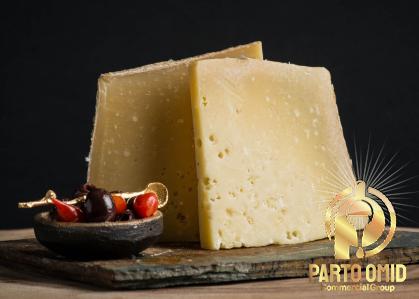 4. **Charcuterie**: Pairing goat cheese with cured meats such as prosciutto, salami, or chorizo adds a savory dimension to the flavor profile. The saltiness and richness of charcuterie complement the creaminess of the cheese, creating a dynamic and flavorful pairing. 5. **Wine**: Whether you prefer a crisp Sauvignon Blanc, a fruity Pinot Noir, or a robust Cabernet Sauvignon, pairing goat cheese with the right wine enhances the tasting experience. The acidity, sweetness, and tannins of wine interact harmoniously with the flavors of the cheese, creating a sophisticated and indulgent pairing. **The Art of Serving Goat Cheese: Presentation and Preparation Tips** When serving goat cheese to guests or indulging in a solo culinary experience, attention to detail in presentation and preparation can enhance the overall enjoyment of the cheese. Follow these tips to elevate your goat cheese serving game: 1. **Allow Cheese to Come to Room Temperature**: Before serving goat cheese, let it sit at room temperature for 30 minutes to an hour to bring out its full flavors and textures. Cold cheese can dull the taste and mouthfeel, so allowing it to warm up enhances the sensory experience. 2. **Use Proper Cheese Tools**: Invest in quality cheese knives, boards, and serving utensils to present goat cheese in an elegant and professional manner. Different types of cheese knives are designed for cutting, spreading, and serving specific varieties of cheese. 3. **Arrange Accompaniments Artistically**: When serving goat cheese with fruits, nuts, honey, or charcuterie, arrange them on a platter in an aesthetically pleasing and inviting way. Create visual interest by playing with colors, textures, and shapes to entice the eyes as well as the taste buds.
4. **Charcuterie**: Pairing goat cheese with cured meats such as prosciutto, salami, or chorizo adds a savory dimension to the flavor profile. The saltiness and richness of charcuterie complement the creaminess of the cheese, creating a dynamic and flavorful pairing. 5. **Wine**: Whether you prefer a crisp Sauvignon Blanc, a fruity Pinot Noir, or a robust Cabernet Sauvignon, pairing goat cheese with the right wine enhances the tasting experience. The acidity, sweetness, and tannins of wine interact harmoniously with the flavors of the cheese, creating a sophisticated and indulgent pairing. **The Art of Serving Goat Cheese: Presentation and Preparation Tips** When serving goat cheese to guests or indulging in a solo culinary experience, attention to detail in presentation and preparation can enhance the overall enjoyment of the cheese. Follow these tips to elevate your goat cheese serving game: 1. **Allow Cheese to Come to Room Temperature**: Before serving goat cheese, let it sit at room temperature for 30 minutes to an hour to bring out its full flavors and textures. Cold cheese can dull the taste and mouthfeel, so allowing it to warm up enhances the sensory experience. 2. **Use Proper Cheese Tools**: Invest in quality cheese knives, boards, and serving utensils to present goat cheese in an elegant and professional manner. Different types of cheese knives are designed for cutting, spreading, and serving specific varieties of cheese. 3. **Arrange Accompaniments Artistically**: When serving goat cheese with fruits, nuts, honey, or charcuterie, arrange them on a platter in an aesthetically pleasing and inviting way. Create visual interest by playing with colors, textures, and shapes to entice the eyes as well as the taste buds.
…
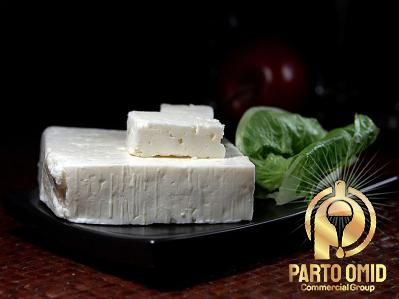 4. **Label Cheeses**: If serving multiple types of goat cheese, label each cheese with its name, origin, and flavor profile to guide your guests and enhance their appreciation of the cheeses. Providing information about the cheeses adds an educational and sophisticated touch to the tasting experience. 5. **Experiment with Different Presentation Styles**: Whether you prefer a rustic cheese board, an elegant charcuterie platter, or a sleek cheese dome, choose a presentation style that reflects your personal aesthetic and enhances the overall dining ambiance. Tailor the presentation to the occasion and mood to create a memorable cheese-tasting experience. **Embrace the Art of DIY Goat Cheese: Homemade Delights** For the adventurous food enthusiast, venturing into the realm of homemade goat cheese offers a gratifying and rewarding culinary experience. Crafting your own goat cheese allows you to control the ingredients, flavors, and textures, resulting in a personalized cheese creation that reflects your creativity and expertise. Follow these steps to embark on your DIY goat cheese-making journey: 1. **Gather Ingredients**: Start with fresh goat’s milk, rennet, and cheese cultures, which are essential for making goat cheese. You can also experiment with adding herbs, spices, or other flavorings to customize your cheese. 2. **Heat and Acidify the Milk**: Warm the goat’s milk in a pot and add a starter culture to acidify the milk. Stir gently and let the milk sit at a specific temperature to allow the culture to work its magic and develop the desired flavors. 3. **Add Rennet**: Introduce rennet, a coagulating agent, to the milk mixture and let it set for a period of time to curdle and form curds. Gently cut the curds into small pieces to release the whey and promote the cheese-making process. 4. **Drain and Shape the Curds**: Transfer the curds to a cheesecloth-lined mold or container to drain the whey and shape the cheese. Allow the cheese to set and firm up before unmolding it for further aging or immediate enjoyment. 5. **Age and Enjoy**: Depending on the type of goat cheese you’re making, you can age it for a few days to several weeks to develop complex flavors and textures. Once aged to your liking, savor your homemade goat cheese with pride and share it with friends and family to showcase your artisanal prowess.
4. **Label Cheeses**: If serving multiple types of goat cheese, label each cheese with its name, origin, and flavor profile to guide your guests and enhance their appreciation of the cheeses. Providing information about the cheeses adds an educational and sophisticated touch to the tasting experience. 5. **Experiment with Different Presentation Styles**: Whether you prefer a rustic cheese board, an elegant charcuterie platter, or a sleek cheese dome, choose a presentation style that reflects your personal aesthetic and enhances the overall dining ambiance. Tailor the presentation to the occasion and mood to create a memorable cheese-tasting experience. **Embrace the Art of DIY Goat Cheese: Homemade Delights** For the adventurous food enthusiast, venturing into the realm of homemade goat cheese offers a gratifying and rewarding culinary experience. Crafting your own goat cheese allows you to control the ingredients, flavors, and textures, resulting in a personalized cheese creation that reflects your creativity and expertise. Follow these steps to embark on your DIY goat cheese-making journey: 1. **Gather Ingredients**: Start with fresh goat’s milk, rennet, and cheese cultures, which are essential for making goat cheese. You can also experiment with adding herbs, spices, or other flavorings to customize your cheese. 2. **Heat and Acidify the Milk**: Warm the goat’s milk in a pot and add a starter culture to acidify the milk. Stir gently and let the milk sit at a specific temperature to allow the culture to work its magic and develop the desired flavors. 3. **Add Rennet**: Introduce rennet, a coagulating agent, to the milk mixture and let it set for a period of time to curdle and form curds. Gently cut the curds into small pieces to release the whey and promote the cheese-making process. 4. **Drain and Shape the Curds**: Transfer the curds to a cheesecloth-lined mold or container to drain the whey and shape the cheese. Allow the cheese to set and firm up before unmolding it for further aging or immediate enjoyment. 5. **Age and Enjoy**: Depending on the type of goat cheese you’re making, you can age it for a few days to several weeks to develop complex flavors and textures. Once aged to your liking, savor your homemade goat cheese with pride and share it with friends and family to showcase your artisanal prowess.
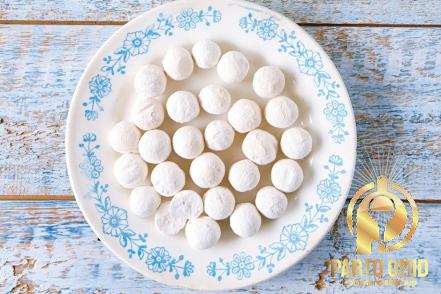
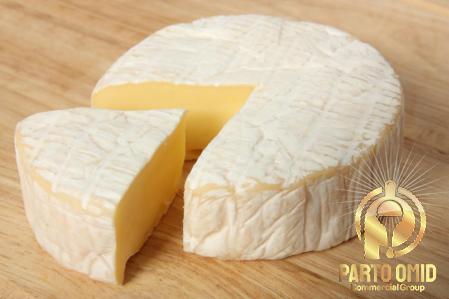
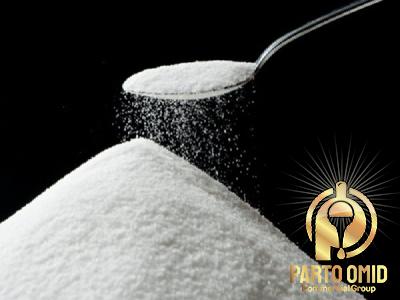
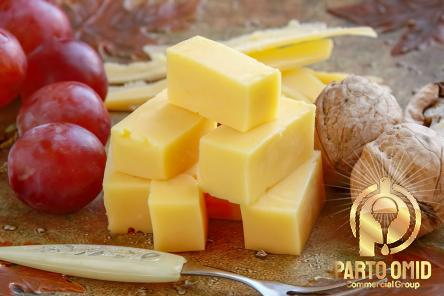
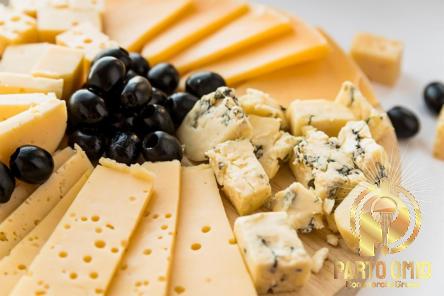
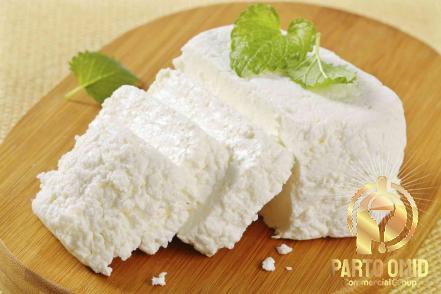
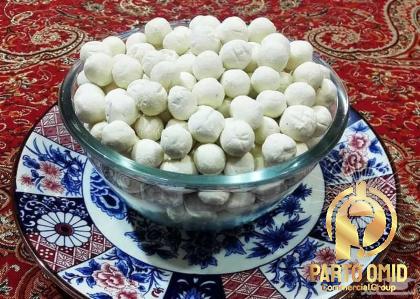
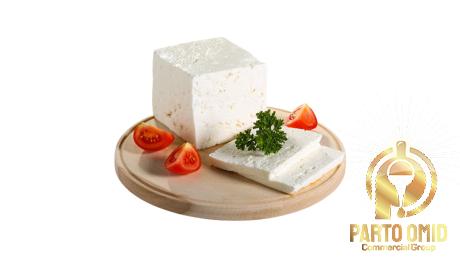
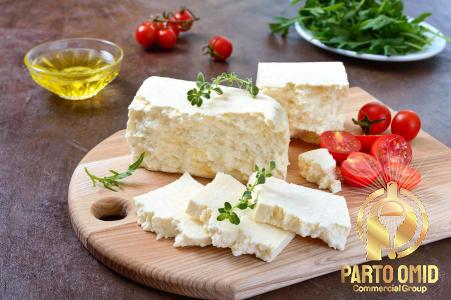
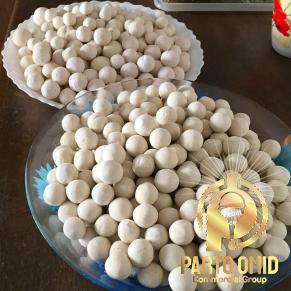
Your comment submitted.